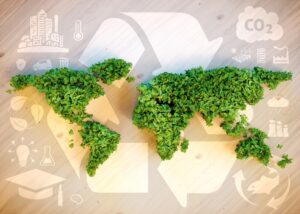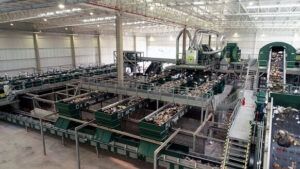
By ABEGAS – 03/21/2025
From the biogas generated by the decomposition of the organic fraction of landfill waste, Brazil has the potential to reach a biometane production capacity of 2.86 million cubic meters per day, which could meet around 5% of the national demand for natural gas.
This estimate, from a study by the Brazilian Association of Waste and Environment, Abrema, is considered somewhat conservative. Another, more optimistic association, Abiogás, directly representing the sector, raises this potential volume to 6.1 million m3/day.
Regardless of which projection is more accurate, the energy recovery from urban solid waste, with the purification of biogas captured from landfills for its transformation into renewable natural gas, is expected to attract investments of around R$ 8 billion by 2029, according to Abrema.
The investment, in the association’s evaluation, should come from groups already structured for operation, owners of the first units, such as Orizon, Solví, Estre, ZEG Biogás, MDC, and Marquise.
These same companies have other projects in development, some already in the authorization process by the ANP. The pace of investments is expected to intensify due to the incentives created by the Future Fuel Law (14.993/2024), enacted in October last year, which created a mandatory purchase mandate for biometane by natural gas producers and importers.
From the current installed capacity of biometane in the country, with eight plants in operation, almost 800,000 m3/day, six capture biogas from urban solid waste from landfills for production, and the other two use agrosilvopastoral waste.
Among the 31 units in the authorization process at the ANP, which are expected to raise national production to 2 million m3/day by the end of the year, seven will be in landfills, and the other 24 will use agrosilvopastoral, industrial, and sewage sludge waste.
With this, Brazil will soon have 13 biometane plants from landfills.
Above 640 t/day of MSW
In the long term, the trend is for the biometane market to grow according to Abiogás’ potential market calculations, with more projects coming from productive sectors.
Of the total estimated 120 million m3/day that could be generated from biometane in the country, the association believes that 57.6 million m3 come from the sugar-energy sector, followed by animal protein (38.9 million m3) and agricultural production (18.2 million).
This is because, through landfills, production has some limitations. To begin with, a landfill, according to Abrema, is only viable for the installation of a biometane unit when it receives at least 640 t/day of waste, which limits the number of viable municipalities in the country and/or requires the formation of regionalized operations between some cities to implement the projects.
The other point is that the operation of the landfill has a useful life, which can range from 20 to 50 years. And when the facility reaches its end, although biogas generation continues for about 15 more years, the declining production makes the biometane unit unfeasible, a slightly expensive investment that uses a system to remove carbon dioxide and traces of other gases (nitrogen and hydrogen sulfide) contained in raw biogas.
However, due to the fact that Brazil still improperly disposes of 41% of its urban solid waste, there are still many possibilities for expansion, beyond the landfills already in operation, i.e., for new ones that should come into operation in the coming years. This is especially given that the deadline for eradicating landfills, according to the National Policy on Urban Solid Waste, expired in August 2024.
Source: EnergiaHoje



